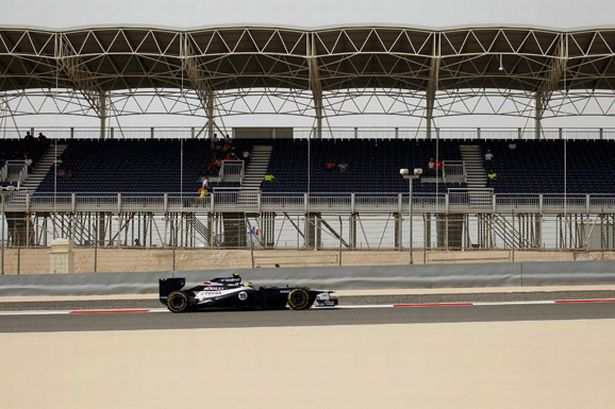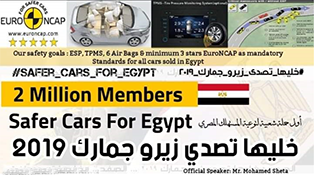FIA
Why are Formula One and other motorsport series not popular in the Middle East?
And although the Formula 1 series is quite well-known in Europe and some parts of Asia and the Americas, it never really was able to kick-off in the Middle East and establish a wide fan-base among the motorsport and super-car enthusiasts in the GCC and rest of the Middle East. Even in the USA, where Formula One is at best a niche sport, the sport regularly draws around 100.000 fans or more to the track, while at the same time one could see 200mph-fast F1 cars passing by empty F1 grandstands in the Middle East.
There are many reasons for that. One of them is that the quality of the TV coverage has almost not changed over the past 20 years, another reason is that F1 was mainly broadcasted through sports TV channels and not general-interest TV channels, which usually have a much larger and broader reach than sports channels.
In addition to that, the F1 was broadcasted on ART TV and is currently aired on BeIn Sports TV, which are both not a free-to-air TV station and therefore require a subscription, which makes it even harder to reach a wider audience. The fact that BeIn Sports is part of the Doha-based Aljazeera network made it even more difficult now to reach F1 fans in the Middle East, especially since the acceptance
Furthermore there are hardly and professional automotive or motorsport-dedicated magazines published in the Middle East and targeting the readers in the Middle East. There are also hardly any professional automotive or motorsport magazine in the Middle East region, which would be able to attract and encourage the Arabic- and English-speaking audience to follow the F1 sport more closely.
And since there is no media or public awareness about motorsport in general and Formula 1 in specific, it is only natural that there will not be any motorsport- or non-motorsport sponsors interested in sponsoring any automotive & motorsport TV programs or and F1 & motorsport sections in car magazines or on automotive websites. Which would consequently lead to the magazine publishers or website operators having no interest at all in investing or publishing anything about motorsport or F1.
Same applies for the big daily newspaper. If there is no public awareness about motorsport & F1, then there will be advertising clients interested in placing motorsport- or F1-related ads in the newspaper, and consequently the newspaper will publish nothing about F1 or motorsport.
And since there are hardly any professional motorsport and F1 features in the Arabic media, including print, digital, TV and radio, it is no surprise that there is no interest from the marketing managers of the car companies in the region to sponsor, to advertise, to invest or to support such media formats.
Of course this does not exclude the fact that many automotive marketing managers and decision-makers of automotive companies involved in the Formula 1 in one way or another, are still making big mistakes when it comes to communicating F1 and motorsport issues in a professional way, and more important, with the appropriate media.
Consequently, having no professional motorsport coverage or having no motorsport coverage at all, means that there will be no interest from potential sponsors to sponsor and support young motorsport talents or any motorsport series in the UAE or any other country in the Middle East.
The many empty grandstands in the Middle Eastern races seen during the live F1 TV coverage, proves that some serious and effective measures needs to be taken by the F1 and motorsport stake-holders in order to revive the motorsport interest in the region and break this vicious circle.
FIA and FOM and the operators of the various racing circuits and motorsport series in the Middle East need to rethink their previous strategies and need to come up with new ideas, approaches and implementation in order to promote grass-root motorsport and in order to make Formula 1 more popular among the over 350 million Arabs living in the Middle East and North Africa
I strongly suggest to the FIA that they need to change their criteria regarding the Middle Eastern media covering the F1 and other motorsport series, as there is a huge difference between the motorsport awareness in Europe and the motorsport awareness in the Middle East.
This is one of the reasons why motorsport in general and F1 in specific have not succeeded in having a huge fan-base and audience in the Middle East, let alone a well-functioning motorsport industry or road safety understanding.
I think the FIA needs to reconsider the way it handles the Arabic- and English-speaking motoring media based in the Middle East in order to make motorsport and F1 more popular and more attractive for the 350 million Arabs living in the Middle East and North Africa.
Otherwise the FIA runs the risk that some of the few remaining professional motoring media in the Middle East might decide not to publish any news, articles or features about the F1 and other FIA motorsport series in the future until they feel that the FIA communication office is supporting and assisting them in their work and media coverage.
After the upcoming Abu Dhabi F1 GP we will publish a comprehensive analysis about the current situation of the motorsport industry and the Formula 1 and why so many things went wrong in the Middle East, and what needs to be done in order to attract fans, TV audience, race visitors and sponsors in the Middle East.
Mohamed Sheta
Dubai – Manama – Cairo
19.11.2014
Related articles:
#SaferCarsForEgypt
 Want to sell your used car or buy one? Then check out our new used car market section
here!
Want to sell your used car or buy one? Then check out our new used car market section
here!
 Looking for a good service center or aftersales customer service? Did you have any bad experience with your car dealer or service center? Then check our 'automotive evaluation charts'
here!
Looking for a good service center or aftersales customer service? Did you have any bad experience with your car dealer or service center? Then check our 'automotive evaluation charts'
here!
Is Egyptian car market corrupt or collapsing?

Is the Egyptian car market collapsing or is it just a corrupt and unprofessional car market?
This is surely one of the most asked questions these days. Everybody is asking ...
AutoArabia Consulting
Middle East Car of the Year

Read more
Crash Test Results

Subscribe




 The Ferrari F8 Spider - The latest mid-rear-engined ...
The Ferrari F8 Spider - The latest mid-rear-engined ... LAMBORGHINI CEO STEFANO DOMENICALI RECEIVES 2018 MECOTY ...
LAMBORGHINI CEO STEFANO DOMENICALI RECEIVES 2018 MECOTY ... Lamborghini Lounge launch and Aventador SVJ Global ...
Lamborghini Lounge launch and Aventador SVJ Global ... Lamborghini Polo Storico celebrates 50th anniversary of ...
Lamborghini Polo Storico celebrates 50th anniversary of ... World debut for new McLaren 600LT at Goodwood Festival ...
World debut for new McLaren 600LT at Goodwood Festival ... Automobili Lamborghini crosses billion Euro turnover ...
Automobili Lamborghini crosses billion Euro turnover ... Automobili Lamborghini achieves another record year: ...
Automobili Lamborghini achieves another record year: ... The new Lamborghini Urus: The world’s first Super ...
The new Lamborghini Urus: The world’s first Super ... Lamborghini Looks Back on its First SUV: The LM002
Lamborghini Looks Back on its First SUV: The LM002 McLAREN CONFIRMS ITS MOST TRACK-CONCENTRATED ROAD CAR YET
McLAREN CONFIRMS ITS MOST TRACK-CONCENTRATED ROAD CAR YET




